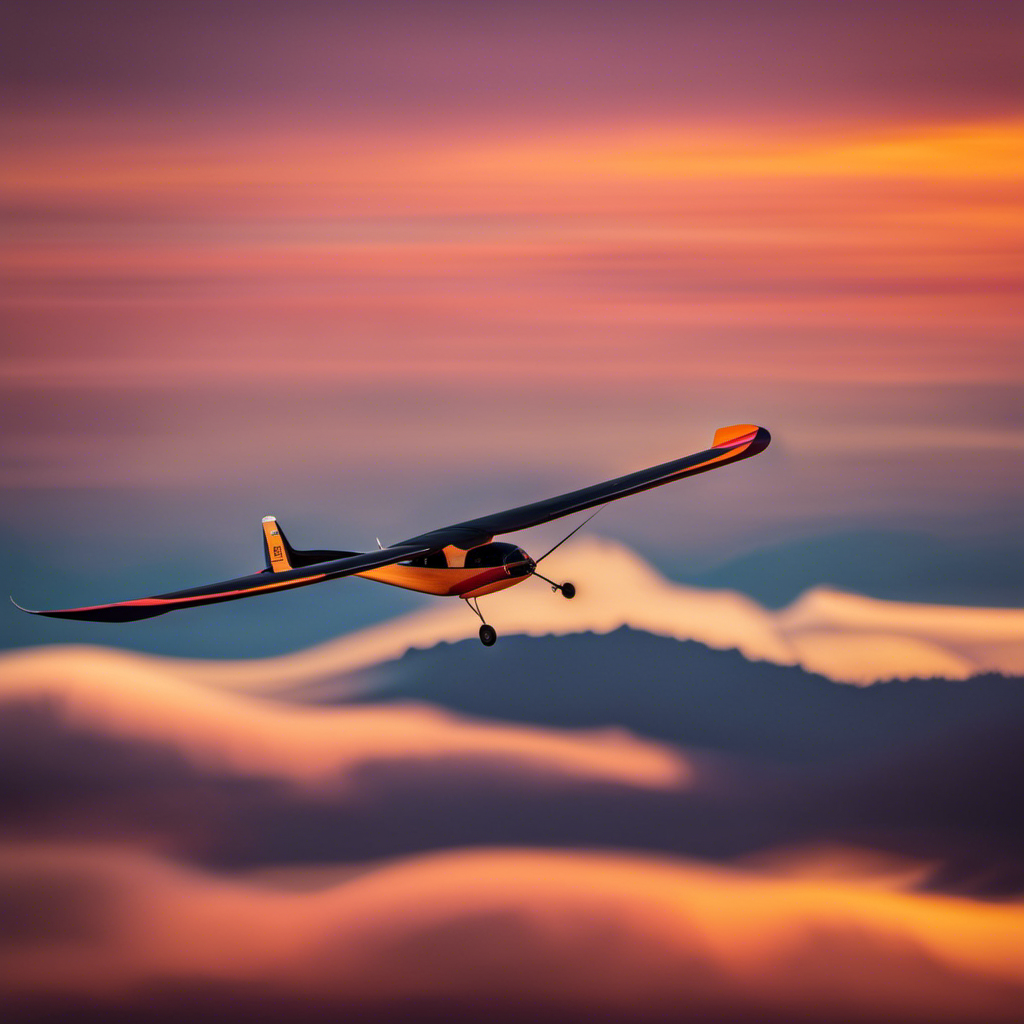Is hang gliding losing popularity as an activity?
As a passionate hang glider, I’ve often pondered this question. Hang gliding, with its rich history and adrenaline-inducing experiences, has long been a favorite among adventure seekers. However, with the emergence of new extreme sports and increasing safety concerns, the future of hang gliding seems uncertain.
In this article, we will explore the factors contributing to the sport’s decline, while also discussing potential solutions to revive its popularity. So, let’s dive in and uncover the truth behind hang gliding’s fate.
Key Takeaways
- Embracing technology and utilizing social media and online advertising can help reach younger audiences and generate interest in hang gliding.
- Offering affordable options and collaborating with schools and universities can make hang gliding more accessible to a wider range of people.
- Fostering a strong community and support network is important in boosting confidence, reducing stress, and inspiring others to join the sport.
- Addressing government regulations and legal challenges, such as licensing requirements and liability concerns, is crucial for the sustainability of hang gliding as a sport.
Historical Significance and Popularity of Hang Gliding
Hang gliding’s popularity has been declining in recent years due to the rise of other extreme sports. However, it is important to acknowledge the historical significance and enduring popularity of this exhilarating activity.
Hang gliding emerged as a recreational sport in the 1970s, captivating adventurers who sought the thrill of soaring through the skies like birds. Its popularity soared, attracting enthusiasts from all walks of life. Hang gliding competitions became a regular occurrence, pushing the boundaries of what was thought possible. It became a symbol of freedom, pushing individuals to conquer their fears and experience the beauty of the world from a unique perspective.
While its popularity may have waned, hang gliding will always hold a special place in the hearts of those who have experienced its unmatched thrill. As extreme sports continue to evolve, let’s explore the emerging trends that are captivating thrill-seekers around the globe.
Emerging Trends in Extreme Sports
With emerging trends in extreme sports, it’s fascinating to see how new activities are captivating adrenaline junkies.
One of the most exciting aspects of these trends is the integration of emerging technologies into extreme sports. From high-tech helmets with built-in cameras to GPS tracking devices, the use of technology enhances the experience for both athletes and spectators.
Additionally, extreme sports marketing has played a crucial role in the growth and popularity of these activities. Companies are now investing in sponsorships, events, and social media campaigns to reach their target audience. These marketing efforts not only showcase the thrill and excitement of extreme sports but also help to attract new participants.
However, with the increase in popularity comes the need for safety concerns and risk management measures. It’s crucial for athletes, event organizers, and equipment manufacturers to prioritize safety to ensure the longevity of these thrilling sports.
Safety Concerns and Risk Management
One of the most pressing issues in extreme sports is the need to prioritize safety and manage risks effectively. Safety regulations and accident prevention are crucial factors in ensuring the well-being of athletes and participants.
In the world of hang gliding, safety measures have become increasingly important as the sport continues to evolve. Hang gliding associations and governing bodies have implemented stricter safety regulations to minimize accidents and injuries. This includes regular maintenance of equipment, mandatory safety training, and strict adherence to flight protocols. These measures not only help prevent accidents but also promote a culture of safety within the hang gliding community.
By prioritizing safety and effectively managing risks, we can ensure a safer environment for hang gliders to pursue their passion.
Now, let’s explore the accessibility and cost of hang gliding.
Accessibility and Cost of Hang Gliding
When it comes to hang gliding, there are a few key points to consider in terms of accessibility and cost.
Firstly, training and certification requirements play a crucial role in determining who can participate in the sport. Obtaining the necessary training and certifications can be a time-consuming and costly process.
Additionally, the cost of equipment and maintenance is another factor to take into account, as hang gliding requires specialized gear that can be quite expensive to purchase and maintain.
Training and Certification Requirements
Hang gliding’s training and certification requirements have become more stringent in recent years. This is to ensure the safety of pilots and increase the overall training effectiveness. As a hang glider pilot, I understand the importance of proper training and the responsibility that comes with it. The table below highlights the key aspects of hang gliding training and certification:
| Requirements | Training Duration | Certification |
|---|---|---|
| Ground School | 10-15 hours | Written Exam |
| Simulator Training | 5-10 hours | Practical Exam |
| Solo Flights | 25-50 flights | Flight Test |
| Mentorship | Ongoing | Experience Evaluation |
These requirements help pilots develop the necessary skills and knowledge to handle various flying conditions and emergency situations. It is crucial for pilots to take their responsibilities seriously and prioritize safety above all else. With proper training and certification, pilots can confidently navigate the skies and enjoy the thrill of hang gliding.
Transitioning to the next section on the cost of equipment and maintenance, it is important to consider the financial aspect of this exhilarating sport.
Cost of Equipment and Maintenance
Transitioning to the cost of equipment and maintenance, it’s important to consider the financial investment required for this thrilling activity.
Hang gliding may seem like an expensive pursuit, but there are options available for all budgets. The key is finding equipment that balances affordability with quality and safety. From beginner gliders to advanced models, there are choices for every level of expertise.
Additionally, maintenance requirements should not be overlooked. Regular inspections and repairs are necessary to ensure the longevity and safety of your equipment. It’s crucial to factor in the cost of routine maintenance when budgeting for hang gliding. With proper care and maintenance, your equipment can last for many years.
As we delve into the next section on environmental impact and conservation efforts, it becomes clear that hang gliding is not just about the thrill—it’s also about preserving the natural beauty of our surroundings.
Environmental Impact and Conservation Efforts
Although hang gliding has a relatively low environmental impact, conservation efforts should be implemented to ensure the sport remains sustainable.
Hang gliding involves soaring through the skies with the help of wind currents and gravity, relying on the natural elements for its exhilarating experience. However, it is essential to recognize the potential impact on the environment and take steps to minimize it.
Conservation efforts can include measures such as promoting responsible flying practices, protecting sensitive habitats, and educating hang gliders about environmental stewardship. By implementing these initiatives, we can ensure that hang gliding continues to be enjoyed while minimizing its ecological footprint.
However, conservation efforts alone may not be enough to secure the future of the sport. The aging demographic and lack of new participants pose additional challenges that need to be addressed to ensure the longevity of hang gliding for generations to come.
Aging Demographic and Lack of New Participants
To address the aging demographic and lack of new participants, you should consider implementing strategies to attract and engage younger individuals in this thrilling activity.
Hang gliding has always been a sport that captures the imagination and provides a sense of freedom and adventure. However, with the aging population and changing interests, it’s important to adapt and evolve to ensure the future of hang gliding.
Here are four strategies to engage younger individuals:
-
Embrace technology: Utilize social media platforms and online forums to connect with younger audiences and share the excitement of hang gliding.
-
Offer affordable options: Create affordable packages or discounts for young people to make hang gliding more accessible and appealing.
-
Collaborate with schools and universities: Establish partnerships with educational institutions to introduce hang gliding as an extracurricular activity or even a college course.
-
Create youth-centric events: Organize youth competitions, workshops, and festivals to showcase the excitement and thrill of hang gliding.
Promoting Hang Gliding as a Thrilling and Unique Experience
By embracing technology and collaborating with educational institutions, we can create a youth-centric experience that showcases the excitement and thrill of hang gliding. To promote hang gliding as a thrilling and unique experience, we need to develop effective promotion strategies that target the younger generation.
Social media platforms and online advertising can help us reach a wider audience and generate interest in the sport. Additionally, incorporating customer testimonials into our marketing efforts can provide potential participants with real-life stories of the exhilaration and sense of freedom that hang gliding offers. Hearing firsthand accounts from satisfied customers can inspire others to give it a try.
Importance of Community and Support Networks
Creating a strong community and support network is essential for fostering a sense of camaraderie and providing encouragement to individuals interested in getting involved in hang gliding. Here are three reasons why community and support networks are crucial in the hang gliding world:
-
Mentorship: Having experienced mentors is invaluable for newcomers. Mentors can guide them through the learning process, offer advice, and share their own experiences, creating a supportive environment for growth.
-
Psychological Benefits: Hang gliding can be exhilarating but also challenging. Being part of a community provides a sense of belonging and support, reducing stress and anxiety. It also boosts confidence, as individuals feel encouraged and celebrated for their achievements.
-
Sharing Knowledge: Within a community, knowledge and expertise are shared freely. This exchange of information helps newcomers learn faster and avoid common mistakes, ensuring their safety and enhancing their overall experience.
By fostering this strong community and support network, hang gliding enthusiasts can continue to thrive and inspire others to join their ranks.
As we delve into the next section about government regulations and legal challenges, it is important to understand the role these factors play in shaping the future of hang gliding.
Government Regulations and Legal Challenges
Navigating government regulations and legal challenges may seem overwhelming at first, but understanding the rules and seeking legal advice can help you ensure a safe and enjoyable experience in the world of hang gliding. As with any recreational activity, hang gliding is subject to certain regulations imposed by governmental bodies to ensure safety and protect the interests of both participants and the general public.
To give you an idea of some common regulations and legal challenges faced by hang gliders, I have created a table below:
| Government Regulations | Legal Challenges |
|---|---|
| Licensing and Certification | Liability and Insurance |
| Airspace Restrictions | Trespassing |
| Equipment Inspections | Accidents and Injuries |
Understanding and complying with these regulations is essential in order to avoid legal issues and maintain a positive image for the sport. By staying informed and seeking legal advice when needed, hang gliders can navigate these challenges more effectively.
Looking ahead, future prospects and potential solutions will be discussed in the next section, exploring ways to address the challenges faced by hang gliding and ensure its continued growth and popularity.
Future Prospects and Potential Solutions
To ensure the growth and popularity of hang gliding in the future, it’s important to explore potential solutions and opportunities that can help revitalize the activity.
One key aspect to consider is future innovations. Hang gliding has come a long way since its inception, but there is still room for improvement. Advancements in materials and design can make hang gliders more efficient and safer, attracting a wider audience.
Additionally, marketing strategies play a crucial role in promoting the sport. Utilizing social media platforms, partnering with adventure travel companies, and hosting events can help raise awareness and generate interest among both enthusiasts and potential newcomers.
Frequently Asked Questions
What is the average age of hang gliders?
The average age of hang gliders is increasing due to an aging demographic and lack of new participants. However, emerging trends in extreme sports and potential solutions to attract younger enthusiasts may help revive the sport’s popularity.
Are there any government regulations in place for hang gliding?
Yes, there are government regulations in place for hang gliding. These regulations ensure safety measures such as pilot certification, equipment inspections, and adherence to flight restrictions, making it a safer sport.
How much does it cost to get started with hang gliding?
To get started with hang gliding, beginner packages typically range from $2,000 to $5,000. Costs vary depending on factors like equipment quality and training options. It’s important to compare prices and choose a package that suits your budget and needs.
What are some emerging trends in extreme sports that may impact hang gliding?
Virtual reality experiences and drone racing are two emerging trends in extreme sports that may impact hang gliding. These innovations offer new and exciting ways for thrill-seekers to experience the adrenaline rush of flying and may attract more participants to the sport.
What are some potential solutions to the aging demographic and lack of new participants in hang gliding?
Promoting accessibility and encouraging youth participation are key to addressing the aging demographic and lack of new participants in hang gliding. This can be achieved through offering affordable lessons, organizing youth events, and utilizing social media to reach a wider audience.
Conclusion
In conclusion, while some may argue that hang gliding is a dying sport, the truth is far from it. Hang gliding holds a rich historical significance and continues to attract enthusiasts from all over the world.
With emerging trends in extreme sports and a growing emphasis on safety and risk management, hang gliding is evolving to meet the demands of modern times.
Additionally, efforts to promote accessibility, conservation, and community support are ensuring the longevity of this thrilling and unique experience.
Hang gliding is here to stay, soaring high in the skies for years to come.
With a heart that soars as high as the skies, Aria, affectionately known as “Skylark,” is the driving force behind Soaring Skyways. Her journey into the gliding world began as a young dreamer gazing up at the soaring birds, yearning to experience the weightlessness and freedom they embodied. With years of experience both in the cockpit and behind the scenes, Aria’s commitment to the gliding community is unwavering.










